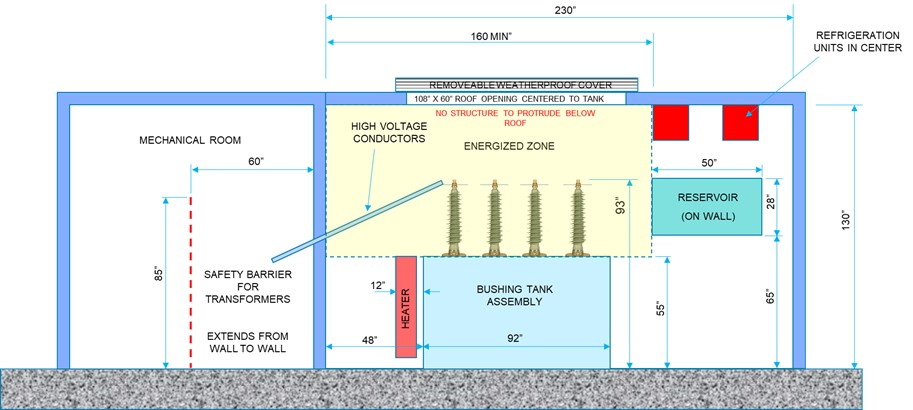Research & Technical Content
Evaluation of Resin Impregnated Paper Bushing Failure Propagation Time:
To minimize costly outages due to bushing failures, many utilities are investigating dry-type, polymer based bushing alternatives, such as Resin Impregnated Paper (RIP), Resin Impregnated Synthetic (RIS), Resin Impregnated Fiberglass (RIF) bushings. An advantage of these types of bushings is that they typically do not cause extensive transformer damage or other collateral damage when catastrophically failing. However, the time frame from initiation of a failure inside such bushings to the actual failure of the bushing remains unknown. It is also unknown whether a bushing monitoring system on a RIP, RIS, or RIF bushing could detect the failure propagation to possibly prevent an unexpected outage. This study aims to equip funders with a better knowledge of the time to failure once the dry-type bushing has been compromised, and to learn if monitoring the power factors and capacitance could detect possible insulation failure of the bushings early to prevent transformer failures. A HSP 138 kV RIP bushing has been used in the first phase of this study.
Establishing Baseline criteria for DFR on Bushing:
This project aims to investigate good baseline DFR trace library based on manufacturer, batch of bushing production, and voltage class. A good DFR baseline is critical for creating good interpretation guidelines for DFR on bushing measurements.
Evaluation of 34.5 kV & 69 kV Bushing Under Full Loads & Cyclic Ambient Conditions:
Experience from the field (especially from renewable substations) has shown that some OIP & RIP bushings unexpectedly show an increased power factor in a subsequent reading. The origin of the increased power factor is not known. This project subjects the bushings to elevated oil temperature, full rated power load, as well as elevated and cycled ambient temperature. The power factor and capacitance are periodically monitored to try to understand the cause of power factor change in some polymer bushings.
Evaluation of Infrared Monitoring Analytics in Lenox 138 kV Yard:
Transformers are key assets in a substation and the performance of a transformer is very important to maintain the electrical grid reliability. The open research question is whether infrared monitoring of transformers and analytics of such solutions is effective in predicting degradation, and preventing the resulting failure such as bushing failures. This research project intends to address this by implementing IR technology in the 138 kV yard and creating different transformer failure mechanisms to evaluate the effectiveness of commercially available IR analytical tools.
Research of Substation Robot Application:
An important question related to the reliable and cost-effective supply of electricity is the prevention of failure of substation assets such as transformers and breakers. Performance of substation assets is very important, and the open research question is whether these assets can be effectively inspected on-line 24/7 by a mobile autonomous substation robotic technology to prevent unscheduled outages and unexpected failure. This project reviews available robotic technologies and evaluates them with regards to the possibilities and challenges of having these 24/7 in a substation environment to provide real-time assessment without personnel onsite.
Services and Capabilities
EPRI has several capabilities available to utilities as part of research work, supplemental projects, or service agreements. Those capabilities include technical knowledge, laboratories, and failure analysis services.
Laboratory Capabilities
Detailed Lenox laboratory capabilities can be found here
For the polymer bushing project most of the work is performed on the EPRI Lenox Laboratory where a 138 kV research substation was built in 2018

In 2022 a new bushing aging chamber is being built for accelerated bushing aging tests.
